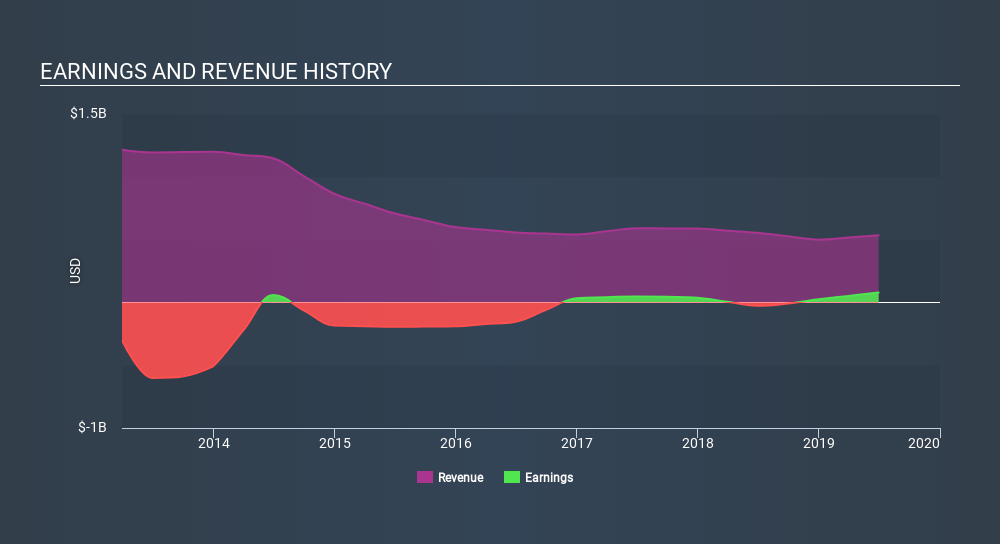- United Kingdom
- /
- Metals and Mining
- /
- LSE:POG
Introducing Petropavlovsk (LON:POG), A Stock That Climbed 95% In The Last Year

The simplest way to invest in stocks is to buy exchange traded funds. But if you pick the right individual stocks, you could make more than that. For example, the Petropavlovsk PLC (LON:POG) share price is up 95% in the last year, clearly besting the market return of around 12% (not including dividends). If it can keep that out-performance up over the long term, investors will do very well! Also impressive, the stock is up 84% over three years, making long term shareholders happy, too.
View 3 warning signs we detected for Petropavlovsk
There is no denying that markets are sometimes efficient, but prices do not always reflect underlying business performance. One imperfect but simple way to consider how the market perception of a company has shifted is to compare the change in the earnings per share (EPS) with the share price movement.
During the last year Petropavlovsk grew its earnings per share, moving from a loss to a profit.
When a company has just transitioned to profitability, earnings per share growth is not always the best way to look at the share price action.
Petropavlovsk's revenue actually dropped 3.5% over last year. So using a snapshot of key business metrics doesn't give us a good picture of why the market is bidding up the stock.
The graphic below depicts how earnings and revenue have changed over time (unveil the exact values by clicking on the image).

It's probably worth noting we've seen significant insider buying in the last quarter, which we consider a positive. That said, we think earnings and revenue growth trends are even more important factors to consider. If you are thinking of buying or selling Petropavlovsk stock, you should check out this free report showing analyst profit forecasts.
What about the Total Shareholder Return (TSR)?
We'd be remiss not to mention the difference between Petropavlovsk's total shareholder return (TSR) and its share price return. The TSR is a return calculation that accounts for the value of cash dividends (assuming that any dividend received was reinvested) and the calculated value of any discounted capital raisings and spin-offs. Dividends have been really beneficial for Petropavlovsk shareholders, and that cash payout contributed to why its TSR of 95%, over the last year, is better than the share price return.
A Different Perspective
It's good to see that Petropavlovsk has rewarded shareholders with a total shareholder return of 95% in the last twelve months. Since the one-year TSR is better than the five-year TSR (the latter coming in at 22% per year), it would seem that the stock's performance has improved in recent times. Given the share price momentum remains strong, it might be worth taking a closer look at the stock, lest you miss an opportunity. I find it very interesting to look at share price over the long term as a proxy for business performance. But to truly gain insight, we need to consider other information, too. For example, we've discovered 3 warning signs for Petropavlovsk (of which 1 is major) which any shareholder or potential investor should be aware of.
Petropavlovsk is not the only stock insiders are buying. So take a peek at this free list of growing companies with insider buying.
Please note, the market returns quoted in this article reflect the market weighted average returns of stocks that currently trade on GB exchanges.
If you spot an error that warrants correction, please contact the editor at editorial-team@simplywallst.com. This article by Simply Wall St is general in nature. It does not constitute a recommendation to buy or sell any stock, and does not take account of your objectives, or your financial situation. Simply Wall St has no position in the stocks mentioned.
We aim to bring you long-term focused research analysis driven by fundamental data. Note that our analysis may not factor in the latest price-sensitive company announcements or qualitative material. Thank you for reading.
About LSE:POG
Petropavlovsk
Petropavlovsk PLC operates as a gold mining company in the Far East of Russia.
Undervalued with moderate growth potential.
Similar Companies
Market Insights
Community Narratives



